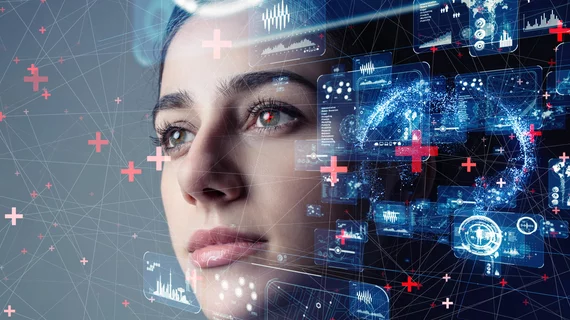The future of medical imaging? Connecting the dots from diagnosis to care
What if artificial intelligence (AI) could support doctors in making decisions faster? What if AI could help detect findings indicative of diseases which otherwise might have been missed? What if it could free healthcare professionals from burdensome tasks, so they can focus on cases which need their full expertise? As technology continues to advance, the future of AI in healthcare is bright and full of potential. Among medical subspecialties, radiology is one of the most prolific generators of digital data.[1] This increasingly digitized environment provides the perfect stage to drive much needed innovation. No surprise that AI has been front and center at this year’s annual meeting of the Radiological Society of North America (RSNA) 2021 – and will also remain a key topic for healthcare overall.
With aging populations and changing lifestyles leading to an increase in chronic conditions such as cardiovascular disease and other severe illnesses like cancer, the demand for medical imaging to facilitate diagnosis, treatment decisions and therapy planning is growing exponentially. In addition, medical imaging data continue to increase and become ever more complex at a disproportionate rate when compared with the number of available trained readers. For example, a particular institution reported that their average radiologist reading CT or MRI examinations would need to interpret one image every 3-4 seconds in an 8-hour workday to meet workload demands.
To tackle the challenges coming along with these trends, it will be important to wisely combine human intelligence and expertise with the opportunities offered by artificial intelligence. Clinicians want to be able to reduce the time to treatment, find a way to identify and intervene early in disease states, reduce potential misses, and automate repetitive tasks. All of these play to the strengths of AI to augment the role of radiology experts to provide accurate and timely diagnosis for their patients.
As a life science company with over 100 years of heritage in diagnostic as well as in therapeutic innovations, Bayer can build on a deep medical understanding across a multitude of diseases. Our ambition is to assist healthcare professionals in making informed decisions at critical steps within a patient’s journey, by connecting the dots along the way. This is why we are working on a digital platform through which healthcare professionals can centrally manage digital clinical imaging and workflow applications including AI enabled solutions, which will be created by Bayer and its strategic partners. Integrated into the medical imaging workflow of the existing PACS (Picture Archiving Communication System) and Radiology Information System (RIS) environment by our platform, each of these offerings will aim to support the complex decision-making processes of healthcare professionals in their task to provide a clear direction from diagnosis to care.
Find out more about Bayer’s Radiology Digital Solutions and stay tuned for more news to come in 2022: Homepage | Bayer Digital Solutions Microsite
[1] Impact of artificial intelligence on radiology: a EuroAIM survey among members of the European Society of Radiology | Insights into Imaging | Full Text (springeropen.com), 2019.
2 The Effects of Changes in Utilization and Technological Advancements of Cross-Sectional Imaging on Radiologist Workload, 2015.
